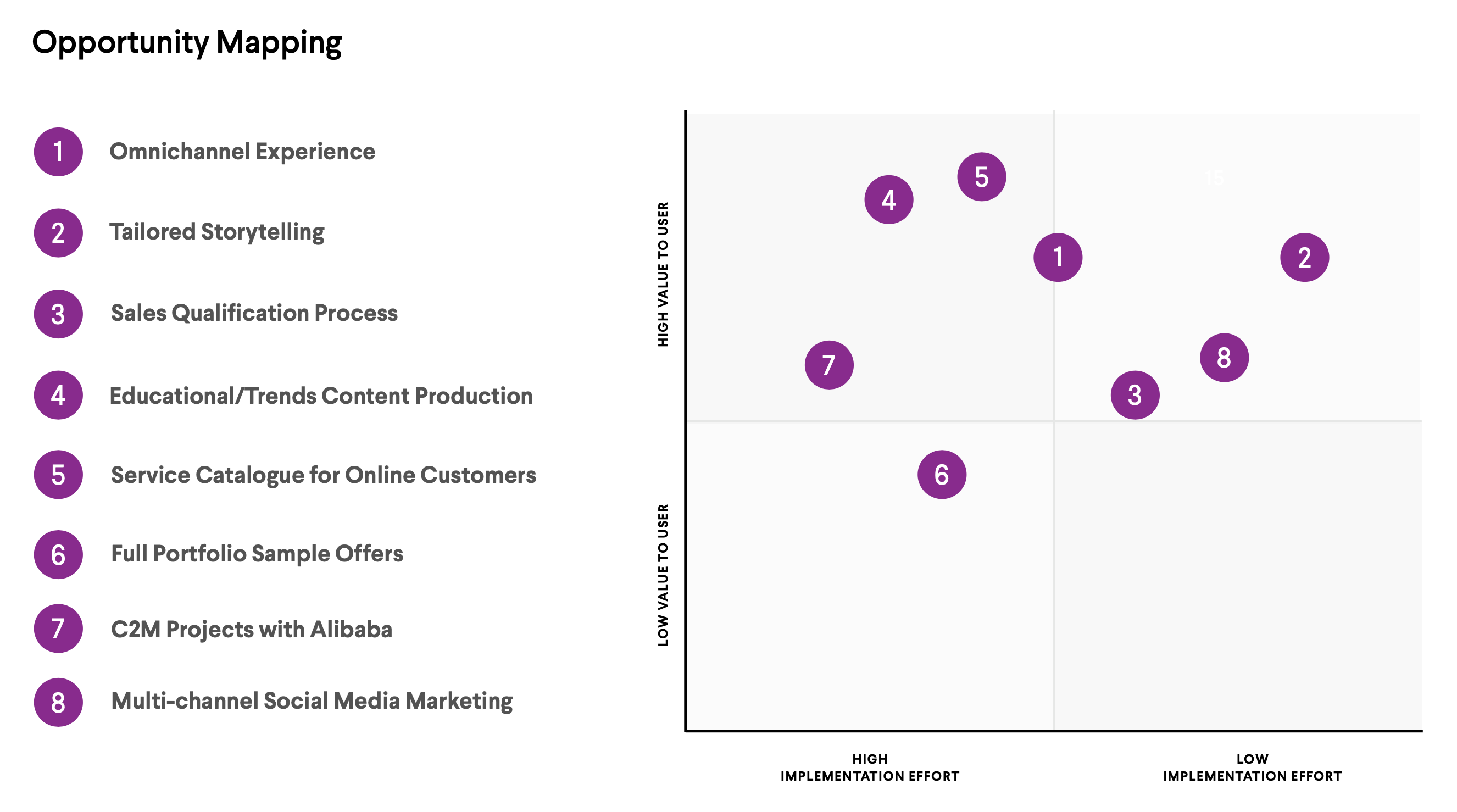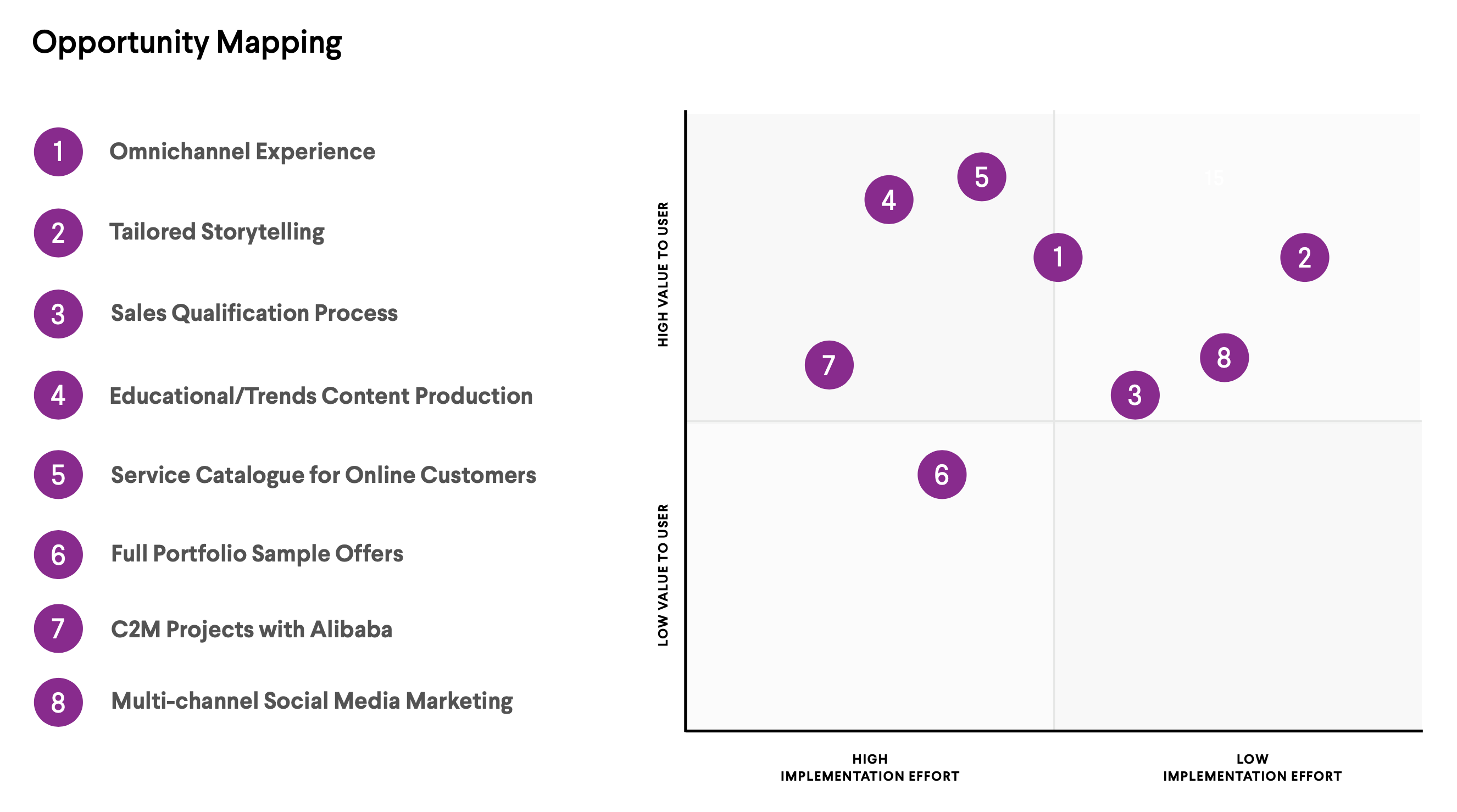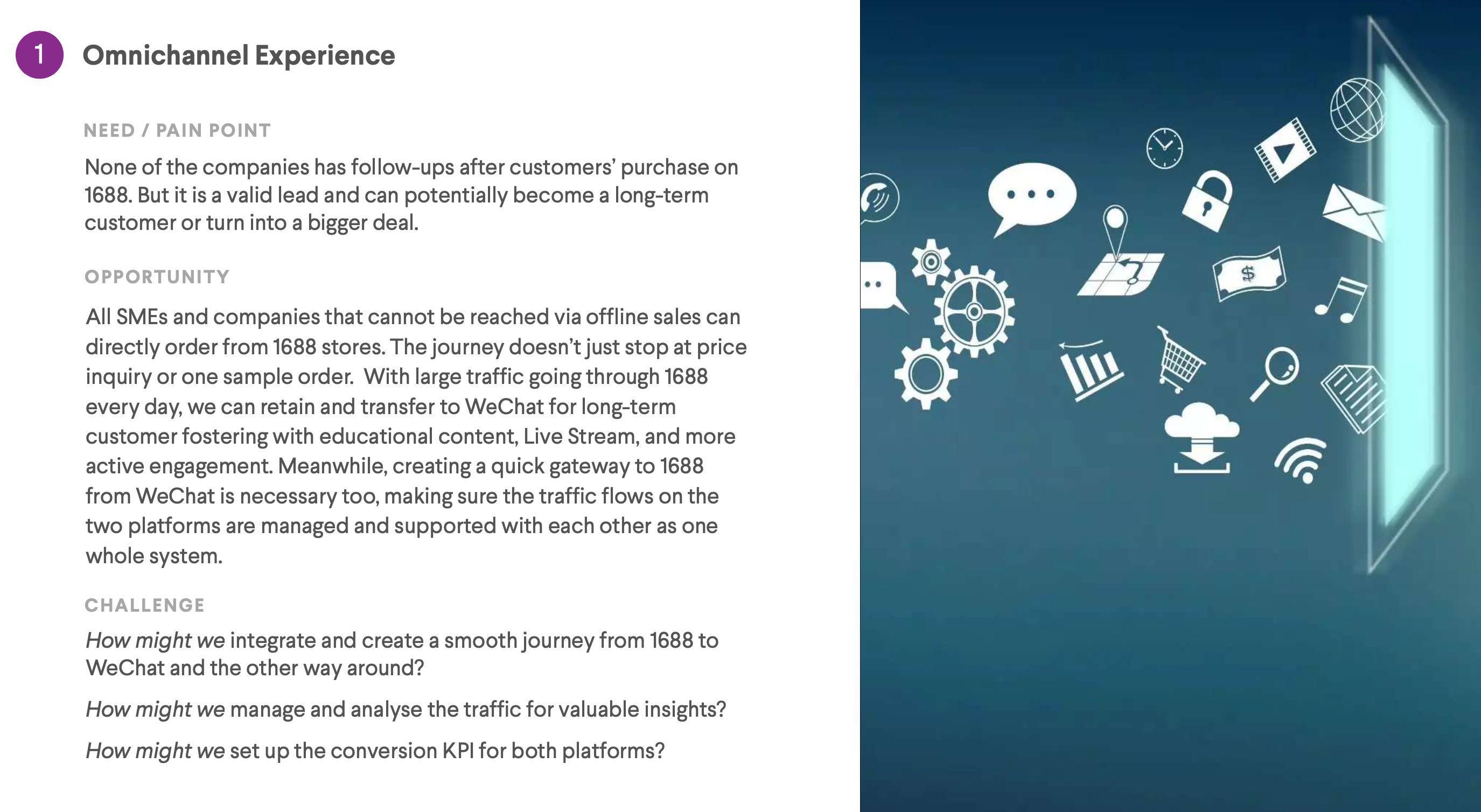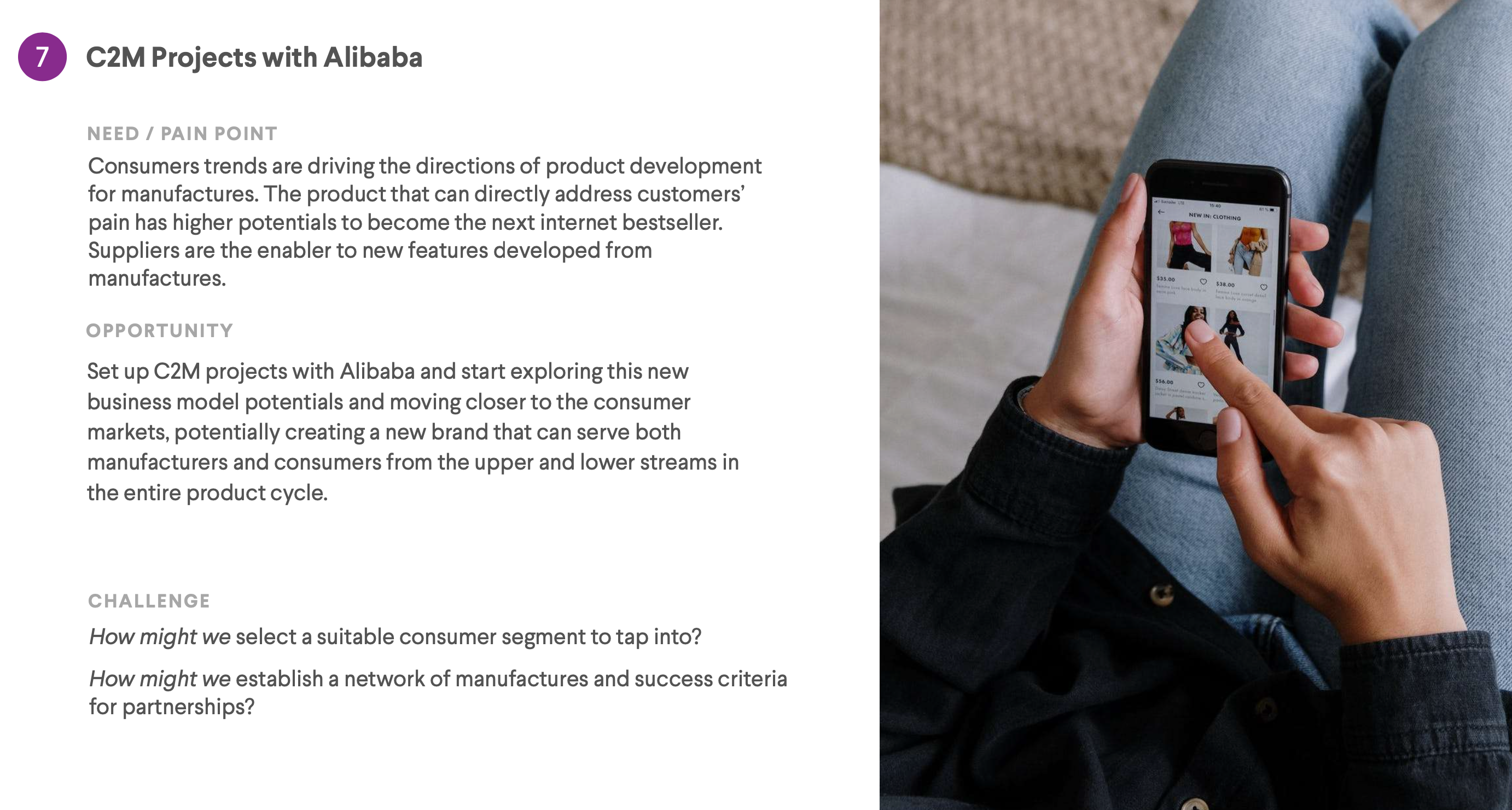¶ Opportunity Maps
¶ What it is
Opportunity mapping is discovering new areas for a customer-centric product, service, or business model development based on customers’ pain points and insights from the market/competitors. From all the insights we have generated about customers and the market, we are trying to find the angles that can help create something of actual value with a chance to win.
¶ Why it is useful
By mapping out all the opportunity areas, we can see an overview of all possible directions for the next steps. In addition, it helps us to draw out action steps to move forward strategically as a whole.
¶ When to use it
After we collected new insights from customers, market, or competitors and it’s time to review our strategy and challenge the status quo.

¶ How is it done
There is no single way to map out opportunities, but no matter how you decide to do it, we cannot draw directions out of the blue but from solid and informative data/evidence.
- Collect and check all information available from customers, market, and competitors. Then, if any aspect needs to be added, go back and dig deeper for sufficient data.
- Map out key trends, major pain points/needs from customers, and new areas our competitors are trying to do, etc. We can categorize them in a bucket and ask ourselves three questions:
- What does this mean for Henkel?
- What needs to be done right now, next, and later?
- What could be new opportunities for Henkel to seize?
- Write down all opportunities and cluster them into different directions or topics (opportunity is an area where multiple solutions are possible to apply)
- Draft out details for each opportunity area, on which needs/pains/trends it is based, what this opportunity entails and what the challenges are to address it.
¶ Do's & Don't
Do's
- Try to connect the dots between key insight and business. Where is the potential in the insight? An unmet need? A new trend?
- Based on your opportunities in customer research. Refer back to insights.
- Add context to the opportunities that help stakeholders understand their rationale and potential.
Don't
- Don’t limit yourself to the big directions. Some smaller opportunity areas can be interesting as well.
- Don’t jump into describing solutions; this is for the next part.
¶ Tools Needed
Whiteboard (virtual)
¶ Example


